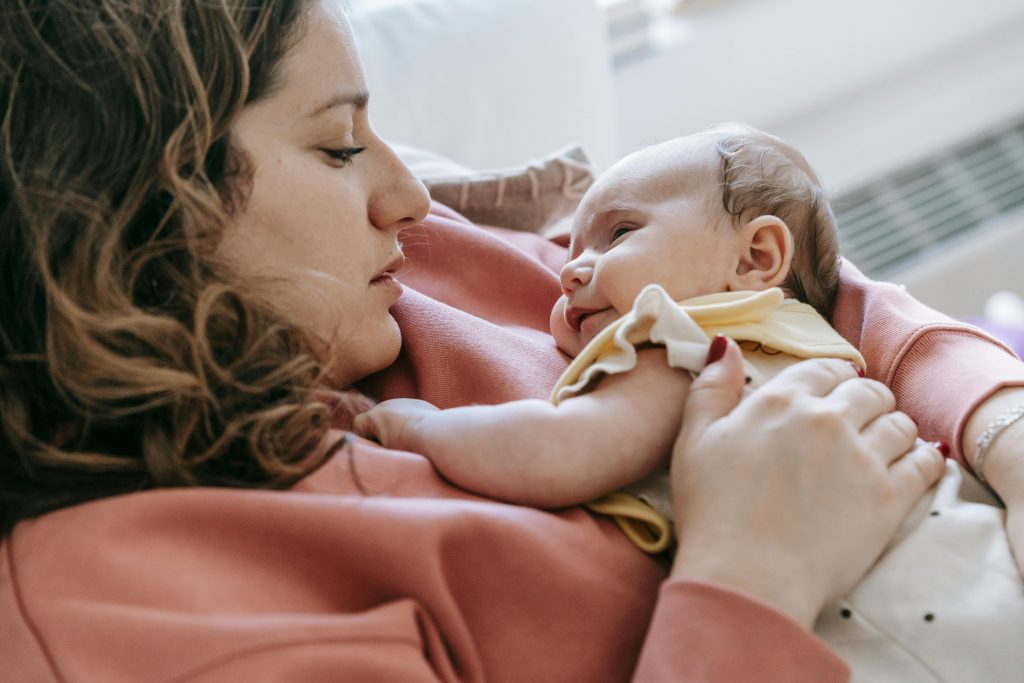Congratulations, momma! The signs of labor might be intimidating, but it means you’ll shortly meet your baby!
Labor starts with a series of continuous, progressive contractions of the uterus that help the cervix dilate (open) and efface (thin out) so the baby can move through the birth canal. Labor ends with the delivery of the placenta.
When does labor start?
Labor is unique for each woman and each pregnancy. Less than 5% of women go into labor on their due date, and over 90% of women will go into labor within two weeks (before or after) their due date.
What do contractions feel like?
During a contraction, you’ll feel your uterine muscles tighten, which causes pain. If you put your hand on your abdomen, you’ll feel it getting harder, which causes dull pain in your lower abdomen and back and pressure in the pelvis. When the muscles relax, the pain fades. Some women describe contractions as strong menstrual cramps.
You may have contractions during your pregnancy—particularly towards the end—that start and stop. Your provider may describe these contractions as Braxton Hicks contractions or false labor. What do Braxton Hicks feel like, and what’s the difference between Braxton Hicks vs contractions? These contractions can be uncomfortable, but they don’t typically get stronger or closer together and don’t open or thin your cervix. Unlike labor contractions, Braxton Hicks contractions often stop or slow down when you change your position or relax.
Timing contractions
Pay attention to the characteristics of your contractions. How often are they happening? How long do they last? How uncomfortable are the contractions?
If you like, you can time and track your contractions on paper or within a mobile app. Timing contractions can help you tell the difference between true and false labor contractions and help you figure out when it’s time for you to head to the hospital or birthing center.

Signs of approaching labor
In addition to having contractions, your body will go through other changes as you get closer to delivering your baby. Remember, every pregnancy is different, so you may experience only some of the following signs.
Nesting
You may experience a sudden surge of energy in the days or weeks before labor. You might also have the urge to “nest” and prepare your home for the baby. Although nesting can begin any time during your pregnancy, many women experience it just before labor begins.
Lightening
Your baby drops lower into your pelvis in the weeks, days, or hours before labor. This is called lightening because you may feel lighter. Breathing may feel a little easier since the baby isn’t pressing on your diaphragm as much as before.
Labor might be intimidating, but it means you’ll shortly meet your baby!
Mucus plug
You may pass a thick pink or blood-streaked vaginal discharge. This is a mucus plug that accumulates at the cervix during pregnancy. When the cervix begins to open, the mucus passes through the vagina.
Labor may begin soon after the mucus plug is passed or one to two weeks later. While this may be a sign that your body is preparing for delivery, there’s no need to call your provider.
Water breaking
During pregnancy, your baby is surrounded by amniotic fluid. When the sack containing this amniotic fluid breaks, it’s called a rupture of membranes. It may feel either like a sudden gush of fluid or a trickle of fluid that leaks steadily. The fluid is usually odorless and may look clear or straw-colored.
Often, a woman will go into labor soon after her water breaks if she isn’t in labor already. If your water breaks, write down the time this happens, how much fluid is released, and what the fluid looks like, then let your healthcare provider know. They’ll advise you what to do next.
Contact us
Have any questions or concerns about the signs of labor? Call CHM’s Maternity Support Team at 1-800-791-6225 for medical and program-related support.

What mother in the Bible would you be?
Take our quiz to find out which mother in the Bible you relate to most.




